Linking Google Slides and Google Keep
- Google Slides
- Comments: 1
If you're using Google Slides regularly then it's worth getting to know how you can integrate it with your other favorite Google Workspace programs - this time, Google Keep!

We live in a world where all of the information we could possibly need is right at our fingertips, but sometimes that can be overwhelming. Any Google Slides users will know that Google Drive stores important documents, like Slides presentations, Docs and Sheets, and it’s also where you’ll find any presentations and files that people have shared with you. As it fills up, though, Drive can get tricky to navigate. If you’ve ever tried to find a specific document, only to be met with a million similarly-named files that take you 3-5 business days to sift through, you know the struggle. We’ve been there, too. That’s why your friendly neighborhood presentation nerds are back with an all-new article on Productivity tips and tricks for Google Drive! We’ve compiled a list of tips and tricks to help you optimize your Google Drive experience and get the most out of Google Workspace.
If you’re looking for beginner tips and tricks on how to use Google Drive, check out Google Slides: The ULTIMATE guide.
You know that one file you keep having to open, that’s 15 subfolders deep in a chaotic shared Drive? Or that folder that’s gotten lost in some dark corner of your own Drive? Yeah, same. We’ve got two tricks to help you combat your Drive-searching woes.
Create shortcuts
Just as you can create a shortcut to a file or folder on your computer, you can create one in Google Drive. Here’s how it’s done:
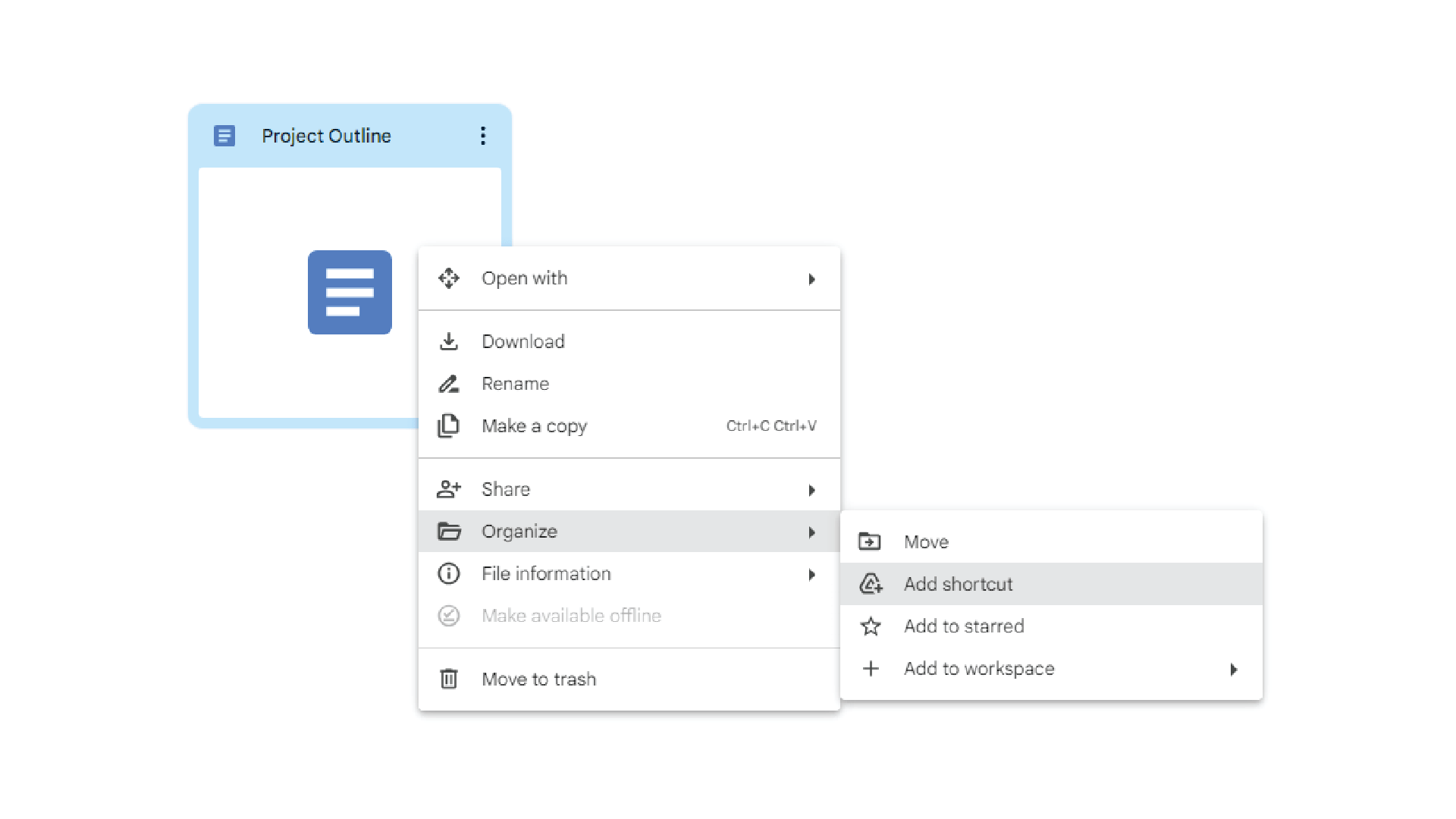
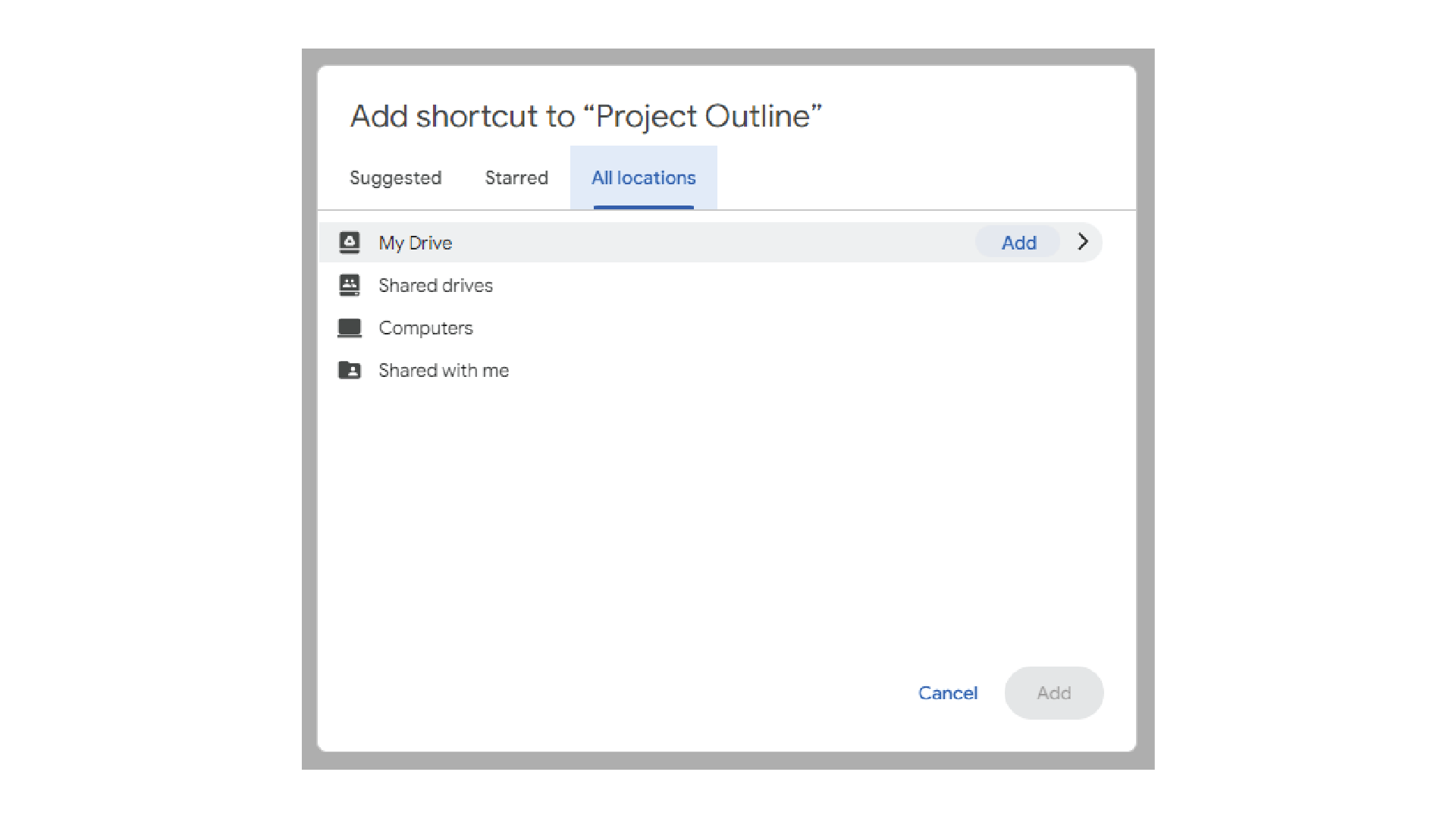
Voila! You’ve got an easily accessible shortcut that saves you a whole lot of searching.
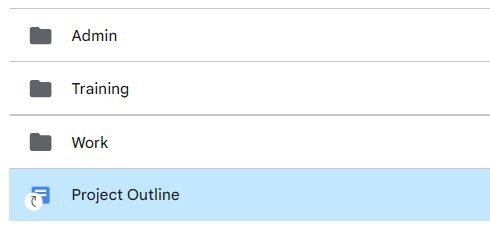
Bonus: You can easily navigate to the location of the original file by right-clicking on the shortcut, going to File information, and then clicking Show file location. That way, even if the file is moved, you can always find it using your shortcut.
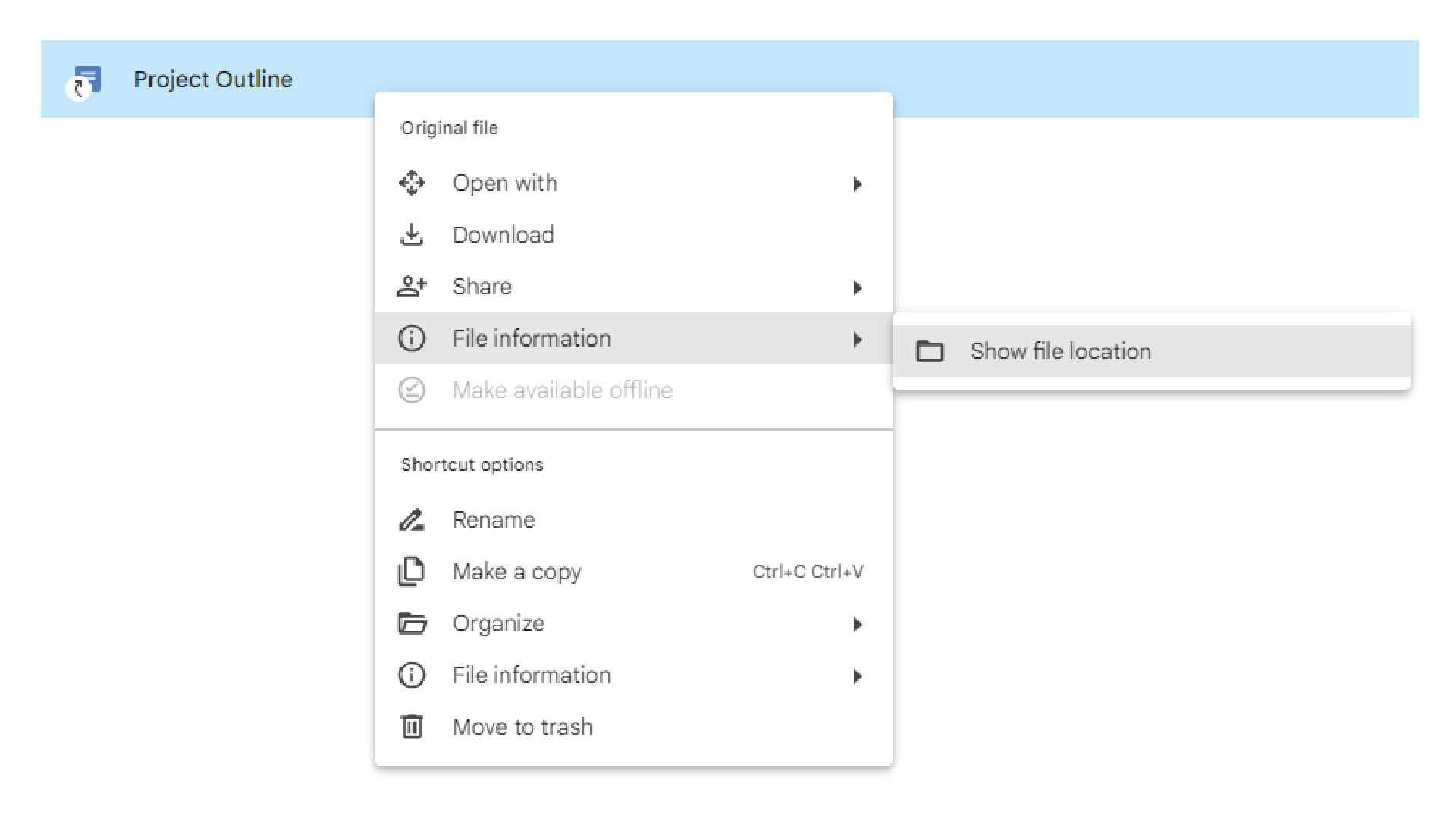
Add items to Starred
The Starred tab lets you easily access important or frequently used items from one place. You can think of it as your Bookmarks on Google Drive. Here’s how you add items to the tab:
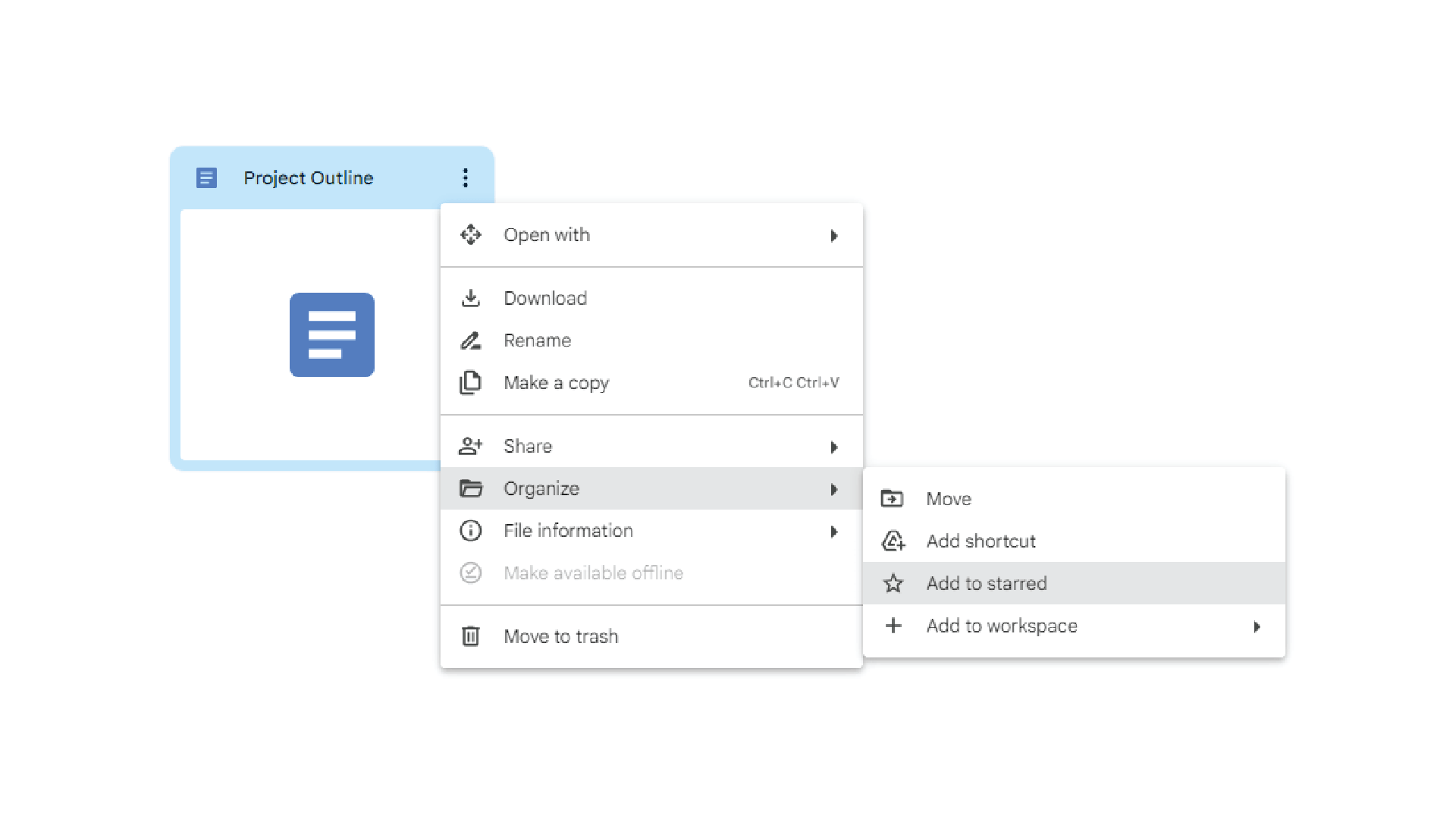
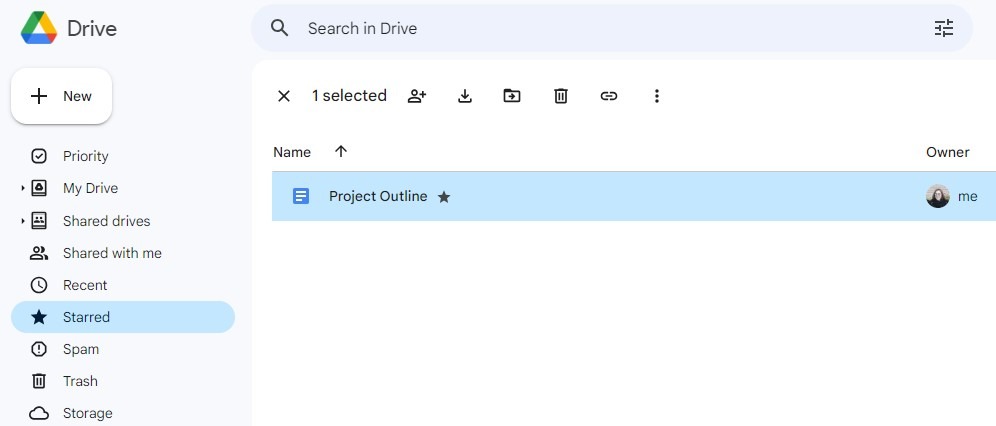
If you don’t have the time (or, frankly, the desire) to tidy up your Drive, we can’t blame you. We all get busy, we have more important things to do. That’s why the following tricks are among our favorites for saving time when using Google Drive.
Colour-code folders
This is a really simple way to keep track of your folders in Drive. Rather than moving them around, you can categorize folders by colour. This is how you do it:
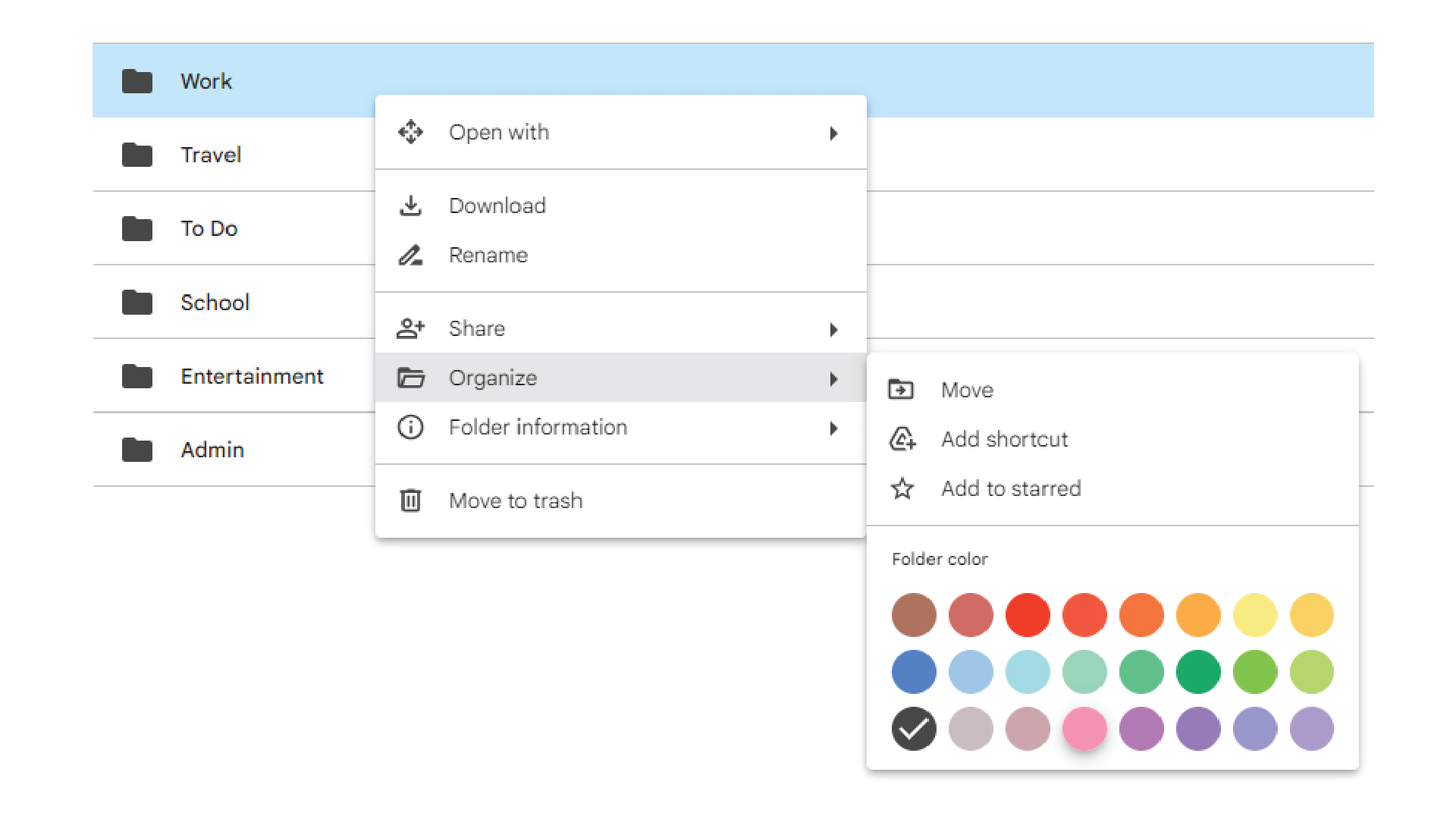
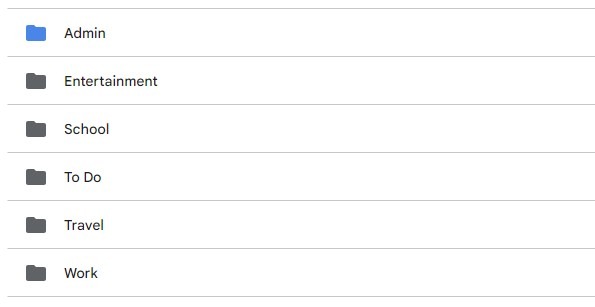
Tip: You can colour-code your folders by category. For example, assign one colour to ‘work and school’, and another colour to ‘ admin’. You can also use a colour that draws your eye to an important folder, so you can find it quickly.
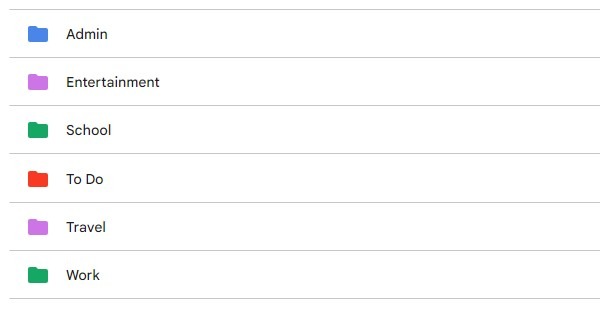
You might know that Google Drive has a ‘Move to’ feature that lets you move files or folders to different locations. The problem is, if the item is several subfolders deep and you need to move it to an equally deep location, the process can take ages. Here’s how you can move files quickly and easily.
Locate and select the file you want to move. To cut the file from its current location, use your keyboard and press Ctrl+X on a Windows device, or ⌘+X on a Mac OS device. Then, navigate to the location where you want to move the file and press Ctrl+V or ⌘+V to paste it. Cutting and pasting files is only accessible using keyboard shortcuts. Unfortunately, you can’t make these changes by right clicking.
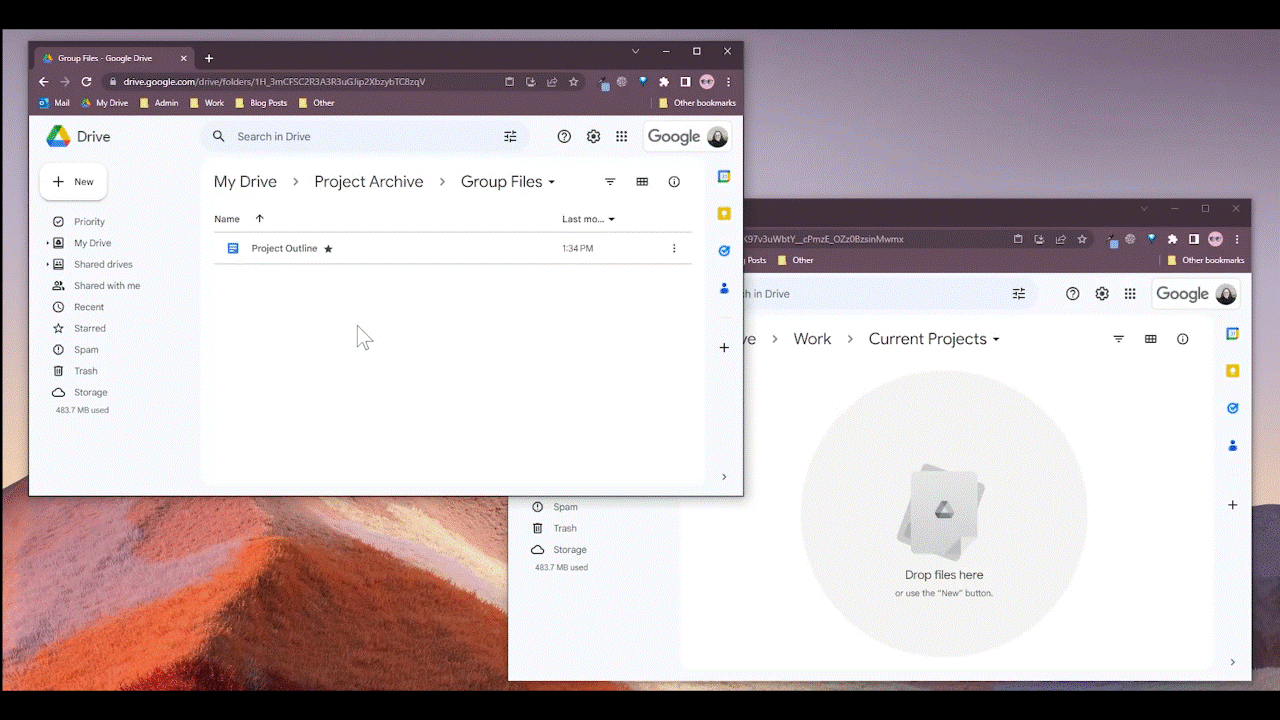
Tip: This works for copying files as well. To copy the file from its current location, press Ctrl+C on a Windows device (or ⌘+C on a Mac OS device). Then, navigate to the location where you want to duplicate the file and press Ctrl+V (or ⌘+V) to paste it. At the time of writing, copying folders is not currently supported.
Eliminate duplicates
This one goes out to the people who have versions upon versions of the same file clogging up their Drive. With this trick, you can say goodbye to adding random letters at the end of your file names, and say hello to a clutter-free Drive. This is how you keep multiple versions of a file without creating duplicates on Google Drive:
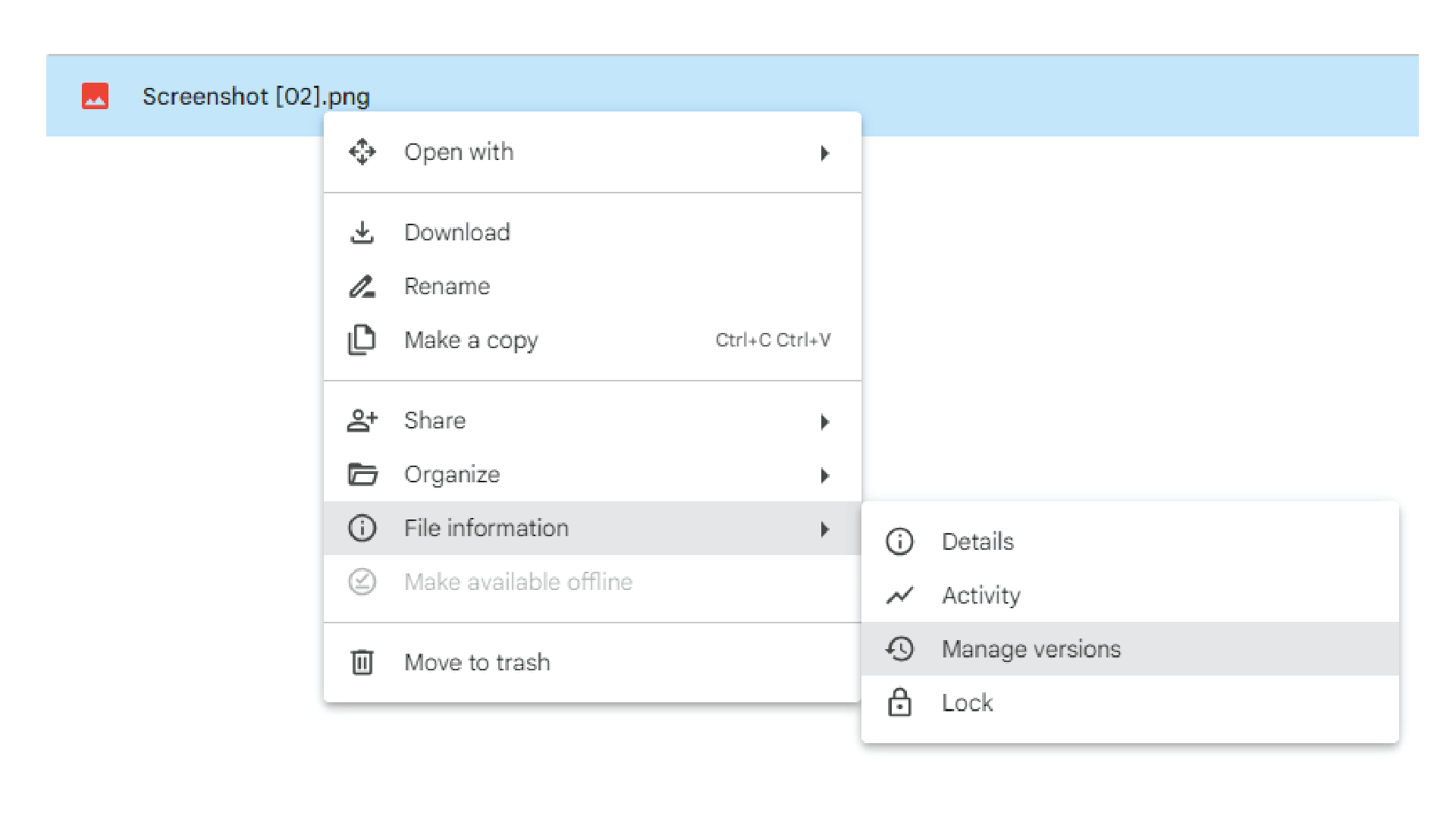
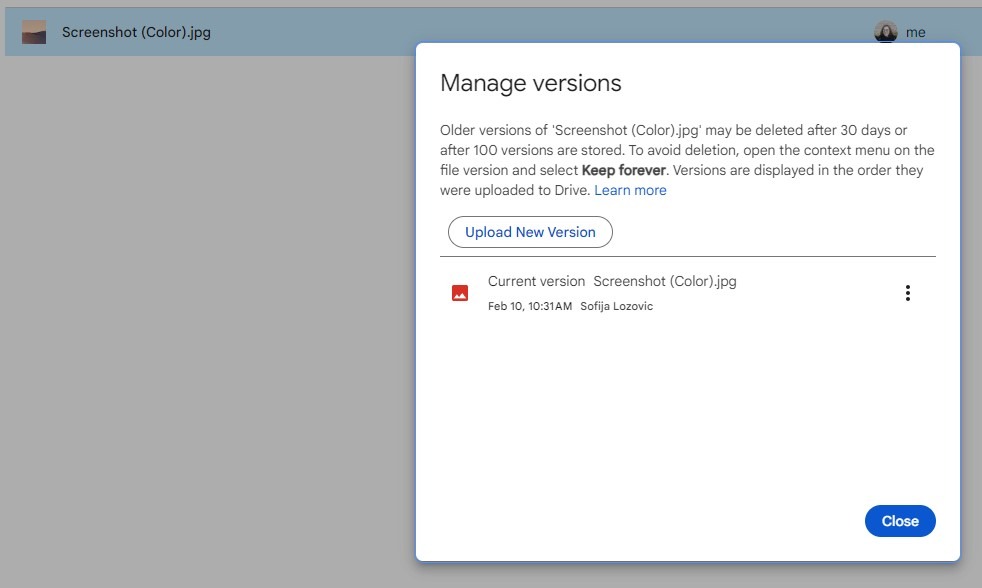
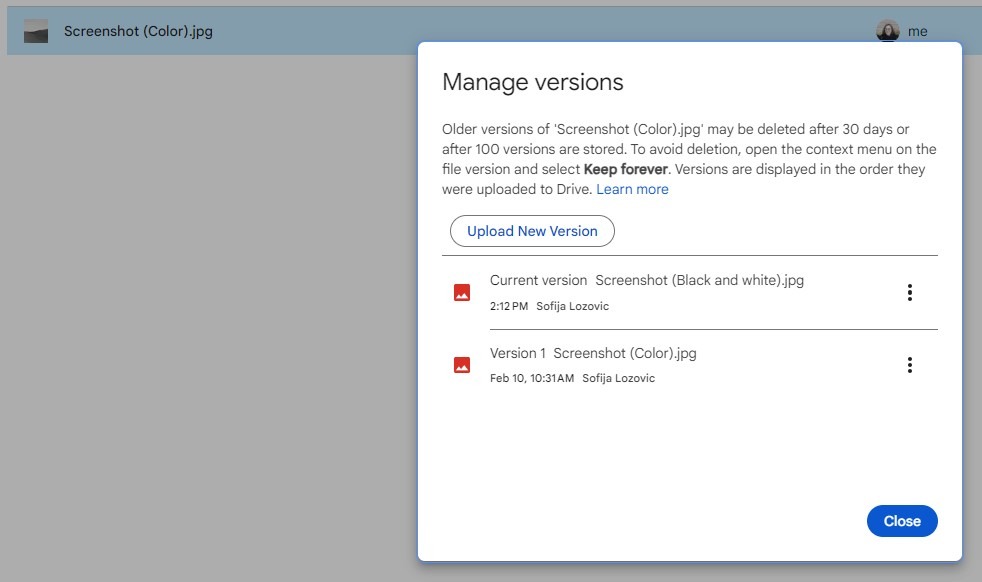
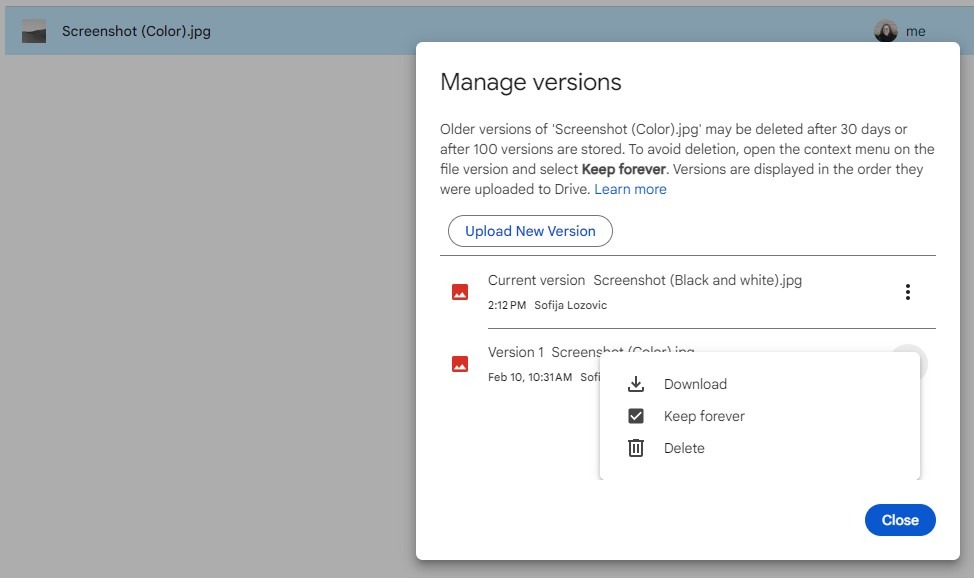
Note: This feature only works for specific files types, such as images, videos, and PDFs. It doesn’t work for Google files, such as Docs, Slides, or Sheets. You can learn more about previous versions of Google files in the Find out what’s changed in a file article.
Tip: If you’re struggling to manage your storage space on your Drive, check out this Google Drive Help blog post for some helpful tips.
That’s a wrap, folks! We hope this article helps you spend less time looking for presentations and more time making them fabulous. Speaking of making fabulous presentations, if you’re looking for tips and tricks in that department, check out some of our other blog posts written by our Google Slides gurus: How to insert video and audio into Google Slides or Editable map for Google Slides.
Leave a commentIf you're using Google Slides regularly then it's worth getting to know how you can integrate it with your other favorite Google Workspace programs - this time, Google Keep!
Google Slides templates are a great starting point to improve the look and feel of your presentation. They’re fab as they’re accessible and low cost, but it’s important to remember that even well-designed presentations can be ineffective if the content is text heavy.
As presentation nerds, we at BrightCarbon have had plenty of opportunity to get to know ins and outs of Google’s browser-based presentation tool. This guide will cover everything you need to know about Google Slides - from the very basics to the most advanced features - and will provide you with the know-how to make brilliant slides, quickly and easily.
Join the BrightCarbon mailing list for monthly invites and resources
Tell me more!BrightCarbon are a great partner in our growth. They are great to work with, very consultative, and professional. I could not recommend working with them more highly.
Neil Davidson Deltek
